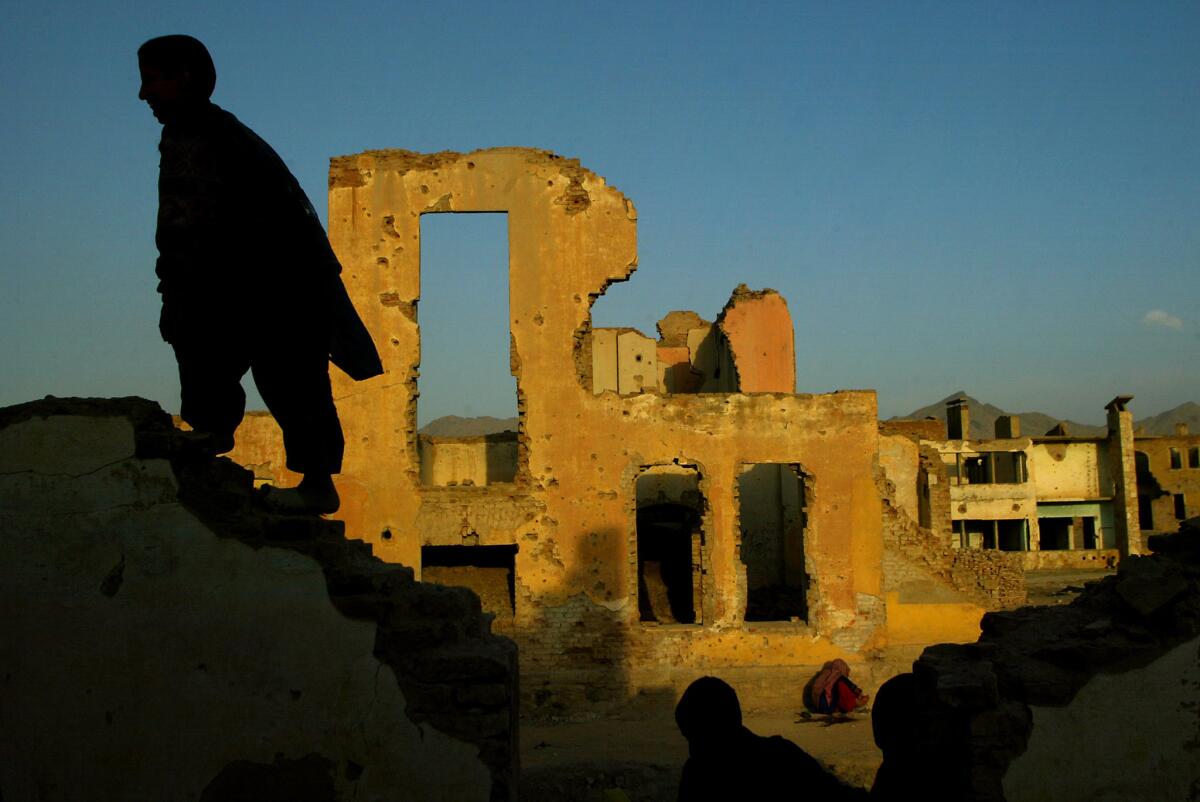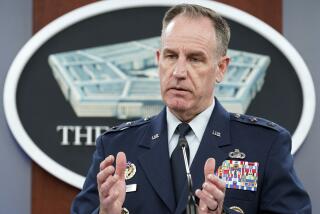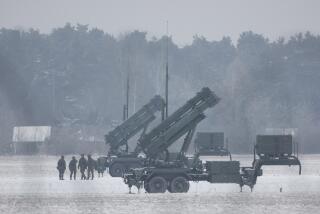U.S. aid to Afghanistan exceeds Marshall Plan in costs, not results

- Share via
The United States has now spent more on the reconstruction of Afghanistan than it did on the Marshall Plan that lifted Western Europe from the ruins of World War II. But it can expect far less return on its investment in the still-unstable Central Asian nation, a Pentagon auditor reports.
Afghanistan is mired in political crisis and will remain dependent on foreign donors, primarily the United States, for years to come, writes John F. Sopko, special inspector general for Afghanistan reconstruction, in his latest quarterly report to Congress.
U.S. spending on the Afghanistan nation-building project over the last dozen years now exceeds $104 billion, surpassing the $103.4 billion current-dollar value of Marshall Plan expenditures, which helped rebuild European nations after World War II. The spending helped a vanquished Germany emerge as the economic engine of Western Europe.
“SIGAR calculates that by the end of 2014, the United States will have committed more funds to reconstruct Afghanistan, in inflation-adjusted terms, than it spent on 16 European countries after World War II under the Marshall Plan,” says the report.
The 259-page account features a photograph of a pile of metal frames from school furniture in Nangarhar province from which the wood was stripped and burned for heat.
Sopko’s accounting of the record U.S. foreign investment makes it clear that the proceeds from Afghanistan will fall far short of the German experience.
Afghanistan is beset by corruption, tribal conflicts and a resurgent Taliban poised to strike government targets once U.S. troops end their combat mission in December. The Islamic militants chased from Afghanistan by the 2001 U.S.-led invasion have stepped up attacks on the fledgling Afghan National Army, inflicting many of the 2,330 deaths suffered by the force over the last two years, the auditor noted.
Almost two-thirds of America’s investment in Afghanistan’s reconstruction, $62 billion, has gone to building up its military and police forces, which are now at a level that far overwhelms the country’s ability to pay for them. Even if the government succeeds in its plan to reduce the size of its security forces by 35% by 2017, the projected annual $4.1-billion cost for the 228,500 citizens under arms is almost double what the country collects in tax revenue, Sopko pointed out.
The Afghan government approved $7.6 billion in spending this fiscal year, despite anticipated revenue of $2.8 billion.
“This year, donor grants will make up most of the shortfall, but aid to Afghanistan has been falling since 2010, and history suggests it will fall even more sharply after U.S. and Coalition troops are withdrawn,” the report notes.
The predicted donor fatigue after U.S.-led NATO forces leave would coincide with a reduced ability for U.S. auditors to evaluate how Afghans are using their U.S. aid, the inspector general noted.
A companion report to Congress this week warned that lax oversight and inventory practices for the $626 million worth of U.S. weapons delivered to Afghan soldiers and police could mean weapons will fall into the hands of militants.
Sopko’s office, known by its acronym SIGAR, said it was initiating “a new series of lessons-learned reports” from the most expensive foreign reconstruction effort underwritten by the U.S. taxpayers.
The report detailed billions spent on ill-considered agriculture and infrastructure projects unsuitable to Afghanistan’s terrain and culture. Among them was a failed attempt to curb opium poppy cultivation to deprive the Taliban of a vital source of income.
The inspector general also alluded to the unfinished work of democracy-building in Afghanistan, where two rival presidential candidates claim to have prevailed in the multistage election that began in April. A recount of more than 8 million ballots cast in the June runoff is underway in hopes of determining the winner between former World Bank official Ashraf Ghani and former Foreign Minister Abdullah Abdullah, who had beaten Ghani in an earlier election round.
Until a successor to President Hamid Karzai is inaugurated, the U.S. cannot get the necessary endorsement from Kabul for a plan to leave behind a U.S. force of nearly 10,000 troops to train Afghan security forces.
Follow @cjwilliamslat for the latest international news 24/7
More to Read
Sign up for Essential California
The most important California stories and recommendations in your inbox every morning.
You may occasionally receive promotional content from the Los Angeles Times.











